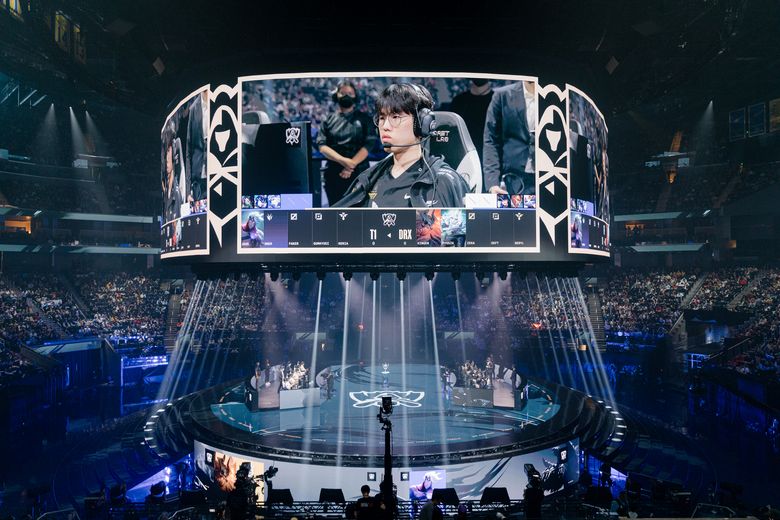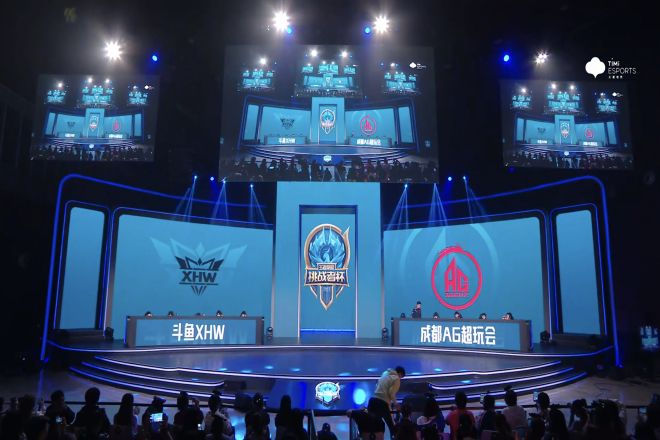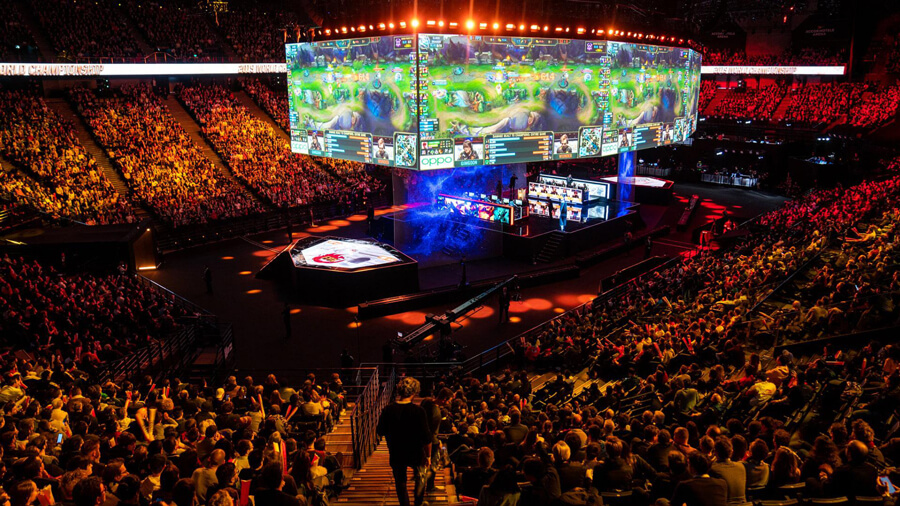The First-Person Perspective: Why Shooters Reign Supreme in the Gaming World
In the vast and varied landscape of the video game industry, few genres command the same level of cultural ubiquity and dedicated player engagement as the First-Person Shooter (FPS). From sprawling AAA blockbusters that dominate yearly sales charts to tactical esports titles that fill stadiums, FPS games are a cornerstone of modern gaming. While many players enjoy a diverse library of titles spanning from complex RPG Games to cerebral Strategy Games, a significant portion of the Gaming Community dedicates hundreds, if not thousands, of hours exclusively to the craft of the digital marksman. This isn’t a coincidence; it’s a testament to the genre’s powerful blend of visceral action, high skill ceilings, technical depth, and community engagement. This article explores the core pillars that make FPS games so compelling, dissecting the technology that powers them, the subgenres that define them, and the vibrant ecosystem that surrounds them, from PC Gaming rigs to the global stage of Competitive Gaming.
The Anatomy of a Modern FPS: Core Pillars of Design and Technology
At its heart, an FPS is about placing the player directly into the action through a first-person camera. But creating a truly great FPS experience is a complex art form, balancing immediate satisfaction with long-term depth. This is achieved through a combination of impeccable game feel, a robust technical backbone, and powerful development engines.
The ‘Feel’ Factor: Gunplay, Movement, and Player Feedback
The single most important element of any FPS is its “feel.” This intangible quality is a combination of several factors. Gunplay is paramount; every weapon must feel distinct and satisfying. This is achieved through a symphony of visual and audio cues: the sharp crack of a gunshot, the detailed reload animation, the subtle screen shake upon impact, and the tactile feedback of recoil. Compare the heavy, thunderous report of a shotgun in DOOM Eternal to the precise, controlled bursts of a Vandal in Valorant. The movement system is equally critical. The lightning-fast “strafe-jumping” of classic arena shooters like Quake contrasts sharply with the weighty, tactical crawl of a game like Squad or the slide-canceling mechanics that became a staple in recent Call of Duty News. This core loop of movement and shooting, when perfected, creates a state of flow that is intensely rewarding and endlessly repeatable.
The Technical Backbone: Netcode, Tick Rate, and Latency
In the world of online multiplayer FPS games, fair and responsive gameplay is non-negotiable. This is where the unseen technical foundation becomes critical. “Netcode” is the umbrella term for the code that handles communication between players’ clients and the game server. It involves complex systems like client-side prediction and lag compensation to ensure a smooth experience even with varying internet speeds. A crucial specification here is the server’s “tick rate,” measured in Hz, which dictates how many times per second the server updates the game state. For years, Counter-Strike servers ran at 64-tick, while the competitive community clamored for 128-tick servers, which offer greater fidelity and more accurate hit registration—a standard that its successor and games like Valorant have adopted. For players, minimizing latency is an obsession, driving the demand for high-end Gaming Hardware. A powerful Graphics Card, a high-refresh-rate Gaming Monitor (144Hz or higher), and a fast CPU are essential to reduce the “photon-to-action” pipeline, ensuring what you see is as close to the real-time game state as possible.
Engines of War: Unity, Unreal, and Proprietary Powerhouses
The foundation of any modern title is its game engine. The Gaming Industry has seen two major players dominate the market. Unreal Engine News frequently highlights its prowess in delivering high-fidelity graphics, making it a popular choice for AAA Games like Fortnite. Its robust toolset is well-suited for creating the large, detailed environments common in the Battle Royale genre. On the other hand, Unity News often showcases the engine’s flexibility and accessibility, which has made it a favorite among Indie Games developers, powering hits like Escape from Tarkov. Beyond these, many major publishers use proprietary engines tailored to their specific needs, such as the id Tech engine for DOOM or the Frostbite Engine for the Battlefield series, each optimized for different aspects of the FPS experience, from blistering performance to large-scale environmental destruction.

The FPS Spectrum: From Tactical Precision to Chaotic Spectacle
The term “FPS” is not monolithic. The genre has fractured into numerous subgenres, each catering to a different player fantasy and skill set. Understanding this spectrum is key to appreciating its broad appeal across both PC Gaming and Console Gaming platforms.
Tactical Shooters: The Chess of Combat
In tactical shooters, a single bullet can mean the difference between winning and losing a round. Games like Counter-Strike 2, Valorant, and Rainbow Six Siege are defined by their low time-to-kill (TTK), emphasis on strategic positioning, team coordination, and utility usage. These games are less about raw twitch reflexes and more about game sense, map control, and out-thinking the opponent. The rise of this subgenre has been a driving force in modern Esports News, with leagues for Valorant News and Counter-Strike News drawing massive viewership on platforms like Twitch. The methodical pace and high stakes make every round a tense, cerebral puzzle.
Arena & Hero Shooters: Speed, Abilities, and Spectacle
A direct descendant of Retro Gaming classics like Quake, the arena shooter emphasizes constant movement, map control over weapon pickups, and pure dueling skill. This DNA evolved into the modern hero shooter, exemplified by Overwatch and Apex Legends. These games blend classic FPS mechanics with character-specific abilities, reminiscent of MOBA Games like League of Legends. The TTK is generally higher, leading to more prolonged engagements where ability management and team synergy become just as important as pure aim. This blend of action and strategy has proven incredibly popular, with Apex Legends News and Overwatch News consistently being hot topics in the gaming world.
Military Sims & Battle Royale: Unprecedented Scale and Survival
On one end of this spectrum are military simulators like Arma 3 and Squad, which prioritize realism above all else. These games feature complex ballistics, large-scale combined arms warfare, and a heavy reliance on communication and command structure. On the other end is the Battle Royale phenomenon, popularized by PUBG and later perfected by Fortnite and Call of Duty: Warzone. These games drop up to 100 players onto a massive, shrinking map, creating a high-stakes game of survival where strategic looting, positioning, and adapting to an ever-changing battlefield are key to being the last one standing. This subgenre has dominated Game Releases and gaming culture for years.
The FPS Ecosystem: Hardware, Community, and Culture
The influence of FPS games extends far beyond the software itself. It has shaped hardware development, created global communities, and become a dominant force in entertainment media, particularly through Game Streaming.

The Hardware Arms Race
Competitive FPS gaming has a symbiotic relationship with Gaming Tech. The desire for a competitive edge fuels innovation in Gaming Peripherals. A high-DPI, low-latency Gaming Mouse, a mechanical Gaming Keyboard for precise inputs, and a quality Gaming Headset for pinpoint audio cues are considered standard equipment. The biggest driver, however, has been the push for higher frame rates and refresh rates. A player on a 240Hz Gaming Monitor sees twice as many frames per second as someone on a 120Hz monitor, giving them a tangible advantage in reaction time. This demand pushes gamers to invest in powerful Gaming PCs and the latest Graphics Cards, making the FPS audience a key demographic for companies like NVIDIA, AMD, and Intel. Even Gaming Laptops are now equipped with high-refresh-rate screens to cater to this market.
Community, Content Creation, and Game Mods
The Gaming Community around FPS titles is one of the most passionate and active in the world. Platforms like Twitch and YouTube are dominated by FPS content. Streamers broadcast their gameplay, building massive followings and influencing the meta of popular games. As per Twitch News, top FPS streamers are some of the biggest celebrities on the platform. Furthermore, the history of FPS games is intertwined with Game Mods. Counter-Strike itself began as a mod for Half-Life. This tradition continues today, with communities creating custom maps, modes, and cosmetic items, extending the life and appeal of their favorite titles, often highlighted in Steam News and community hubs.
The Future is Immersive: VR, Cloud, and Beyond
The next frontier for the genre is undoubtedly VR Gaming. Titles like Half-Life: Alyx have demonstrated the incredible potential of virtual reality to deliver unparalleled immersion. Physically aiming a weapon, manually reloading, and peeking around corners in VR provides a level of presence that a traditional monitor and mouse cannot replicate. Concurrently, Cloud Gaming services are changing accessibility. The ability to stream a graphically intensive FPS to a simple laptop or even a device for Mobile Gaming could bring high-fidelity shooting experiences to a much broader audience, removing the high cost of a dedicated Gaming PC as a barrier to entry.
Recommendations and Best Practices for Players and Developers
Whether you’re looking to improve your skills or build the next big shooter, there are key principles to follow.
Tips for Aspiring Players
- Find Your Niche: Don’t feel pressured to play the most popular game. If you prefer strategy over speed, try Valorant. If you want chaotic, large-scale battles, jump into Battlefield.
- Invest in Your Peripherals: You don’t need the most expensive gear, but a decent Gaming Mouse and a 144Hz monitor will provide a significant and noticeable improvement over standard office equipment.
- Practice Deliberately: Use aim trainers like KovaaK’s or Aim Lab to work on your raw mechanics. Watch pro players and analyze their decision-making. Record your own gameplay to identify and correct mistakes.
- Communicate: In team-based shooters, clear and concise communication is often more valuable than perfect aim. Learn callouts and work with your team.
Considerations for Aspiring Developers
- Nail the Core Loop First: Before you build 20 maps and 50 guns, make sure the basic act of moving and shooting feels incredible. This is the foundation of your entire game.
- Study Level Design: A great FPS level is a work of art. Analyze the design of classic maps from Counter-Strike (e.g., Dust II) or Quake (e.g., The Longest Yard) to understand flow, sightlines, and choke points.
- Prioritize Netcode: For a multiplayer title, poor netcode can kill a game regardless of how good it looks or feels. This must be a technical priority from day one of Game Development.
- Build a Community: Engage with your players early and often. Be transparent about your development process. A strong community can be your best marketing tool and provide invaluable feedback.
Conclusion: The Enduring Appeal of the First-Person View
The First-Person Shooter’s dominance is no accident. It is a genre built on a foundation of pure, unadulterated interactivity and skill expression. It offers a direct and immediate connection to the game world that is both easy to understand and incredibly difficult to master. Its evolution has mirrored the advancement of Gaming Tech itself, constantly pushing the boundaries of graphical fidelity, network engineering, and hardware performance. From the solitary corridors of DOOM to the global esports stages of Counter-Strike and Valorant, the FPS has proven its remarkable staying power. As technology like VR Gaming and Cloud Gaming continues to evolve, the genre is poised to become even more immersive, accessible, and central to the identity of the Gaming Industry for decades to come.












